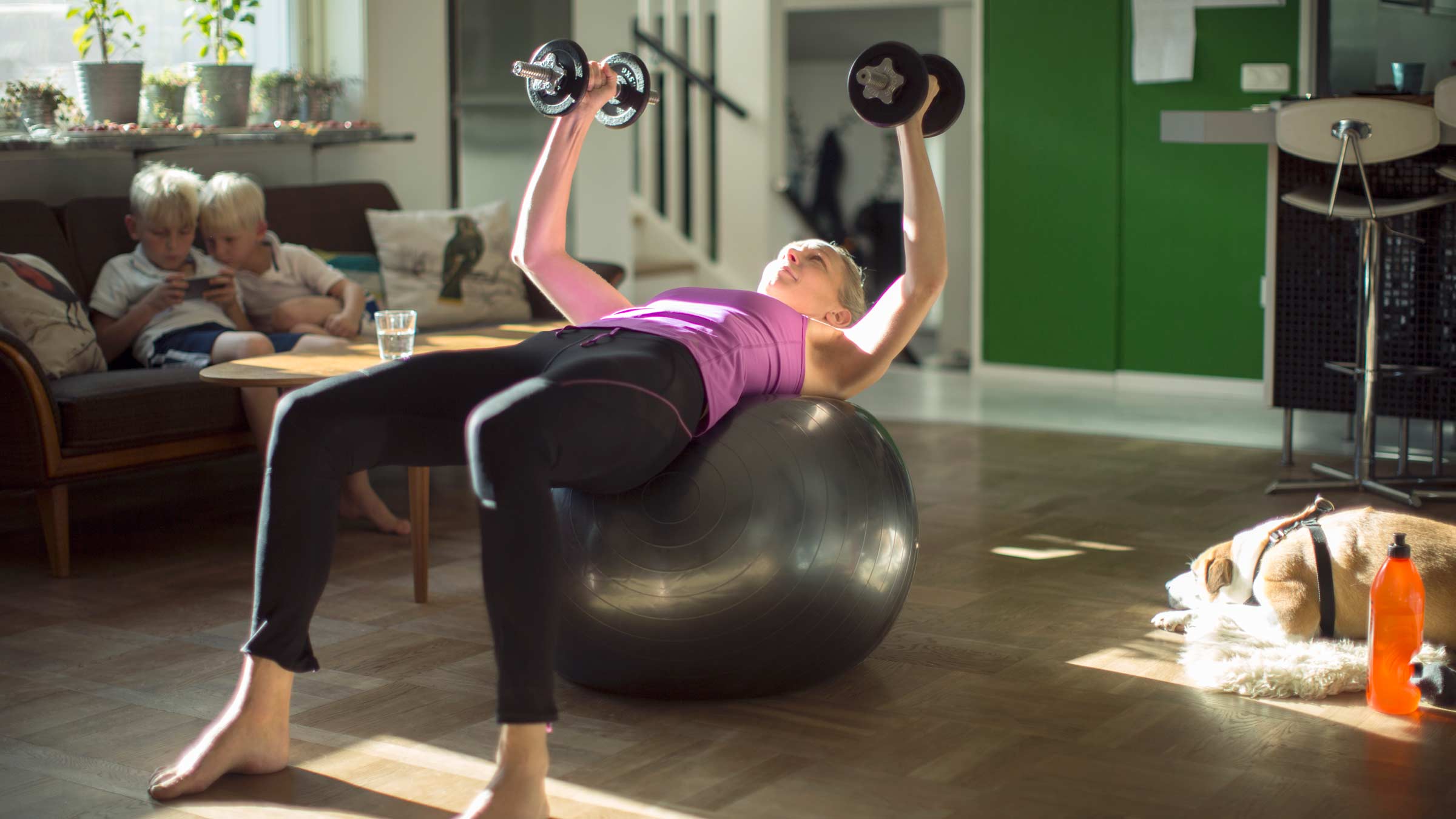
Since the COVID-19 pandemic began, more and more people have chosen to avoid crowded gyms and attempt to create a home fitness plan. Regardless of the reason, just about anyone can get a safe, well-rounded workout in their living room, as long as they follow a few guidelines.
Why gyms aren’t best for everyone
We all have different lifestyles, budgets and fitness motivators. Some people thrive in group fitness classes, where they can find healthy competition with other participants. Others might be more successful exercising individually, where they don’t feel as self-conscious and can control when and where they work out.
While some pandemic-related restrictions have lifted, many people still simply can’t afford to take the additional health risks that might come with a packed commercial gym. Whether out of necessity or desire, a home exercise plan can be a positive outlet for anyone.
The most important component of choosing an exercise routine is sustainability. If you have a tight budget or tight schedule, you’re less able to stick to your goals — you may be spending precious time and money commuting to and from the gym. Make sure you plan well and for your own lifestyle.
How to start your at-home workout
Here are six elements to prioritize when building a new workout at home:
1. Realistic goals
Workout plans are easily sabotaged by high expectations. Set daily and weekly targets that you can meet with your schedule, lifestyle and current fitness level. Identify what you’re trying to achieve, whether it’s training for a race, lowering your cardiac risk factors, losing weight and/or building muscle mass or core strength. Tailor your workout to those goals. A good place to start is by writing out your goals and workout ideas in a detailed plan.
It takes six to eight weeks to build strength, so if you’re starting at a point of not exercising regularly, give yourself time to build endurance and routine.
Starting out slowly and getting regular, consistent exercise will help you build strength safely, preventing most overuse injuries. It’s better to make slow progress than to burn out quickly.
When looking for workout ideas, YouTube is a great resource. There are many free fitness channels with different styles of workouts and lengths of time for all levels.
2. Adequate recovery
Getting enough quality sleep is critical to building strength. Not only is it crucial for recovery, but it’s also during deep sleep that our bodies release human growth hormone, which promotes healthy metabolism and muscle growth.
In addition to adequate sleep, vary your workouts throughout the week to focus on different muscle groups. This gives certain muscles recovery time, reducing your risk of injury.
3. Nutrition
Diet is often more important than exercise when it comes to weight loss and overall health. Fitness progress is severely limited without a healthy diet.
Depending on individual fitness goals, your diet needs may vary — if you’re training for a marathon, for example, your body will require more carbohydrates to work efficiently. Consulting a dietitian can help you get the right balance of protein, fat and carbohydrates.
4. Make cardio part of your routine
The American Heart Association, the American College of Sports Medicine, the CDC and other health experts stress the importance of cardiovascular exercise, especially for women, who are even more prone to heart disease. Aim for 150 minutes of moderate aerobic activity or 75 minutes of vigorous aerobic activity each week. This could be as simple as adding in a 30-minute walk at your lunch break each day to meet your goal.
5. Safety
If there’s anything in your medical history that makes you second-guess your ability to jump into an exercise program safely, check with your primary care physician.
Exercising alone also puts you at a disadvantage if you were to hurt yourself and can’t call for help. When exercising outside, be aware of your surroundings. Make sure you’re wearing reflective clothing or safety lights when in poorly lit areas. Consider carrying a cellphone to call for help in an emergency, and let someone else know where you’ll be exercising and for how long.
What to avoid in a home workout:
Overly intense programs
If you’re not used to regular exercise, look for programs labeled with phrases like “low impact” or that have low to moderate intensity. For beginners, I frequently recommend couch-to-5k running programs, because they’re typically safe and sustainable.
Exercises causing persistent or sharp pain
The discomfort of exertion and using new muscles is normal, but it’s a bad sign if you have sharp, localized pains or persistent soreness or stiffness that lasts longer than 48 hours. If this happens, consider modifying your workout, perhaps with a physical therapist’s help. If worrying pain continues, contact a physician.
Need more help designing an at-home workout?
Physical therapists, and athletic trainers like me, are equipped to identify individual impairments and make safe recommendations for routines.
If you don’t have specific, pain-related needs, you don’t necessarily have to follow up with a clinical expert on a weekly basis.
If you don’t have easy access to an athletic trainer or physical therapist, look for a personal trainer with proper credentialing. To start, look for a trainer with at least a bachelor’s degree in exercise physiology, or who has been credentialed through the American College of Sports Medicine (ACSM). Certified Strength and Conditioning Specialists also have credible training through the National Strength and Conditioning Association.
Wherever you start your fitness journey, you’re on the right track just getting started. Don’t get discouraged – you’re taking the first steps toward lifelong fitness habits.

Ready to be at the top of your game?
Ohio State’s sports medicine experts are here to keep you in your game, maximize your performance and keep you healthy.
Learn more



